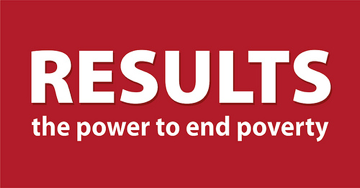About the Author: John Hammock is co-founder of the Oxford Poverty and Human Development Initiative (OPHI) at the Department of International Development, University of Oxford.
We now know that the national Multidimensional Poverty Index (MPI) not only measures social poverty, it also is an effective tool for poverty reduction. There are only two absolute requirements for this lesson to translate into impact. The first is that the MPI must generate good information. For that, its technical implementation must be rigorous, non-partisan and based on indicators that track the results of direct action. The second is that it must be approved by – and implemented with the full support of – the most senior national leadership. Everything else flows from the wisdom generated by this experience.
The first requirement is easier to fulfill than the second. Statisticians and researchers in governments mostly want to implement robust, verifiable data with their work. The technology of the MPI — the Alkire Foster method (also found here) — is quite straightforward and simple to apply. It can be taught quickly and once one goes through the process of building a viable MPI, the technical capacity is there and can be shared with others. It may take time to agree on dimensions and indicators to put into the measure—itself a combination of technical and political factors—but once those are determined, the actual technical work required to develop the national MPI is straightforward. Rigor is therefore possible so that good information is generated for effective policies. The greater the degree to which the dimensions and indicators reflect essential, nationally-recognized (and not partisan) aspects of poverty, the more the measure will not only impact poverty, but will also be resilient during changes in governments.
Experience shows that the second requirement—the approval, support of and ownership by the top leadership—is not only crucial, but it is also more difficult to attain. However, success in this regard can allow an MPI to revolutionize national programs and therefore impact poverty dramatically. Consider Colombia and Costa Rica, for instance.
In Colombia, President Juan Manuel Santos drove the implementation of the MPI and championed it within his cabinet. In Costa Rica, President Luis Guillermo Solís approved the MPI and gave Vice President Ana Helena Chacón the authority to make it a national initiative. In both countries, we can isolate the four key ingredients that were similar and crucial for success.
-
The President of Colombia and the Vice President of Costa Rica were vocal and consistent in supporting the MPI in the press, with their cabinets, and with other governments. Both attended meetings of the Multidimensional Poverty Peer Network (MPPN). They understood the MPI and put all the power of the Presidency behind it.
-
Both leaders set up a mechanism for coordination, planning and implementation of government programs. In both countries the implementation of the MPI was not left to one ministry or one government agency.
-
In Colombia, President Santos created a Poverty Coordination Committee composed of all the social ministers impacted by the MPI and met with this body regularly to evaluate progress toward clear, specific, and quantifiable MPI-based goals. The president used these meetings to highlight new programs to address areas that were lagging.
-
In Costa Rica, the vice president led a Social Cabinet to implement and manage the MPI, bringing together in one forum all the ministries impacted by the MPI. It was the natural place in which to plan and coordinate programs and monitor progress.
In both countries ministers were held accountable to clear and specific targets over time.
-
Colombia created a ‘traffic light’ system of control in monitoring progress toward goals (e.g., a specified percentage decline in a specific indicator over several years) to facilitate monitoring and reporting.
-
In Costa Rica, the government introduced a “Management Scorecard” (developed with the private sector) that mirrored the approach in Colombia.
This political will and support led to actions in both countries that have clearly helped reduce poverty and are highly recommended. The evidence is clear:
-
In 2010, 30.4% of the Colombian population were MPI poor where as in 2015 it was 20.2%. See the full report in Spanish here and a summary in English here.
-
Costa Rica has also seen tremendous results, as noted here and in more depth in Spanish here.
Importantly, both Colombia and Costa Rica nominated a single ministry as the primary actor—the public face of the MPI within the country and internationally. In Colombia, it was the Department of Social Prosperity (DPS); in Costa Rica, the Mixed Institute for Social Aid (IMAS). Each worked closely with the other ministries in their countries, but acted as the secretariats for implementation of the MPI.
These ministers, as well as the President of Colombia and the Vice President of Costa Rica, became avid promoters of the MPI at the regional and international levels within the MPPN and other bodies, reinforcing their ownership of the MPI and helping to reinforce its importance to their own populations and ministers.
Additionally, each country made the MPI a priority measure of achievement in the national plan and incorporated the MPI into the government planning processes.
Finally, each country used the MPI to impact the national budget. The MPI was used as the lens to develop spending plans centering on poverty, helping to eliminate waste, focus programs in the poorest regions, and target limited resources more effectively.
The Colombian and Costa Rican experiences show that ownership of the MPI at the highest levels, combined with a solid, robust reliable method of measurement that provides solid data, has a direct impact on the reduction of poverty in its many dimensions. This success drives understanding and the wisdom to promote the aggressive expansion of the MPI where these conditions exist.



